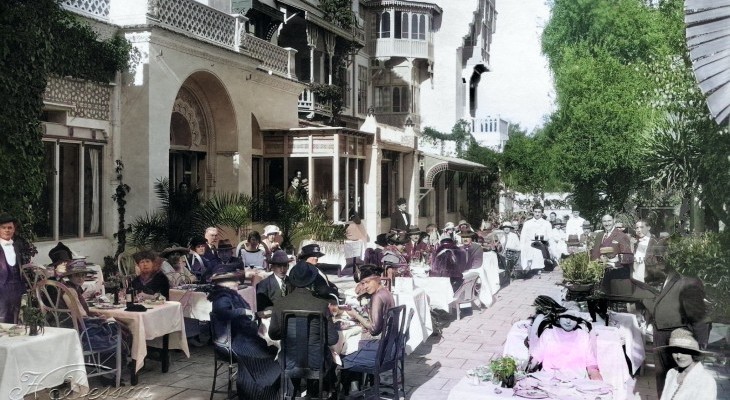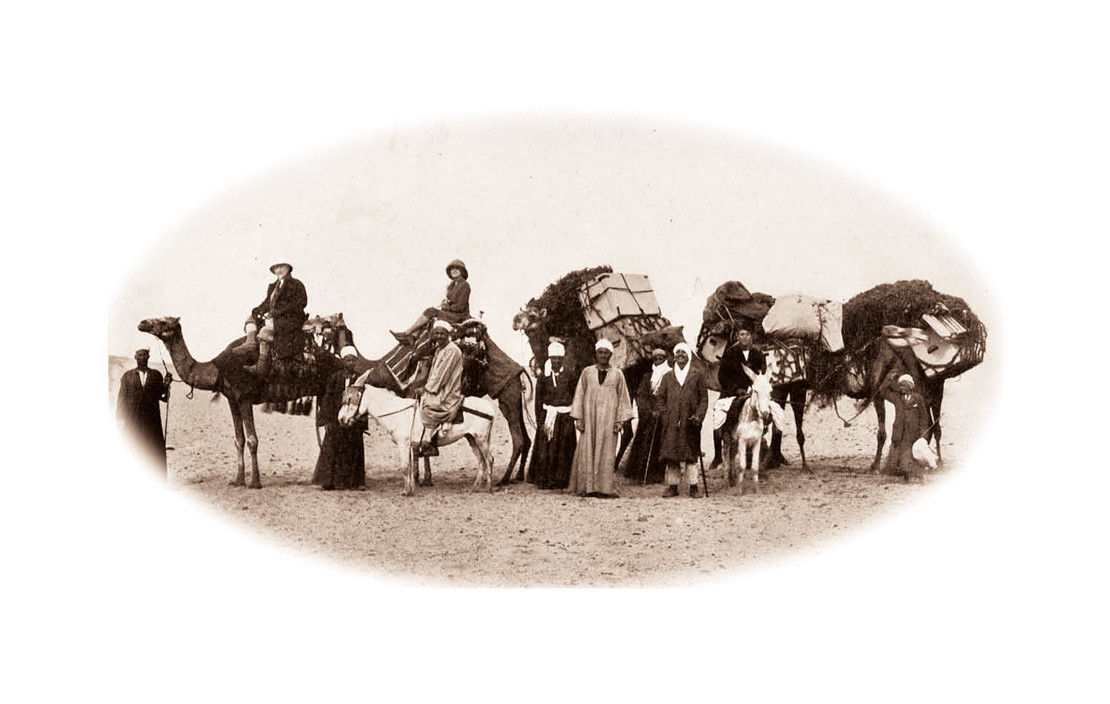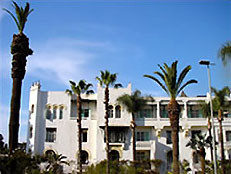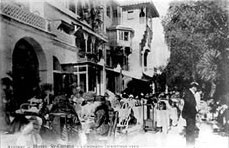

El Djazair

"Heaven still exists," said Henri de Montherlant after a visit to the Hotel St. George, as the El-Djazair was formerly known. Overlooking the busy bay of Algiers and founded on the site of a former Spanish Moorish palace, the hotel has known some splendid days. It was during pre-war times that world travellers set down their cases to savour the easygoing and luxurious Algerian life. Situated around the hotel, in the middle of the city of Algiers, the El Djazair's botanical gardens contain a large number of rare Mediterranean trees, each labelled by species.
Hotel El Djazair formerly known as the Saint George Hotel in Algiers opened in 1889. The site originally housed a mansion built in 1514 for the Dey, the local ruler during Ottoman Algeria. In 1840, following the French invasion, it was converted into a girls' boarding school. By 1889, the property was transformed into the Saint George Hotel, catering primarily to British visitors.
The year 1889 marked the establishment of the Saint George Hotel, reflecting Algiers' growing appeal as a destination for European travelers, especially from Britain. This development was indicative of the city's expanding tourism sector during the late 19th century.
Political Situation in 1889
In 1889, Algiers was under French colonial rule, having been colonized in 1830. The city served as the capital of French Algeria, and the colonial administration was focused on consolidating its control and promoting European settlement. The political environment was characterized by efforts to integrate Algiers into the French Empire, often at the expense of indigenous cultures and governance structures.
Economic Situation in 1889
Economically, Algiers in 1889 was experiencing growth driven by infrastructure development, agriculture, and trade. The French administration invested in modernizing the city's infrastructure, including ports and railways, to facilitate commerce. However, this economic expansion primarily benefited European settlers, while the indigenous population often faced economic marginalization.
Travel and Tourism in 1889:
By 1889, Algiers had become a favored destination for European tourists, particularly from Britain and France. The city's Mediterranean climate, exotic appeal, and improved accessibility via steamships made it an attractive winter retreat. The opening of the Saint George Hotel catered to this influx, offering luxury accommodations that met European standards.
 Today:
Today:
Hotel El Djazair stands as a testament to Algiers' rich history and cultural fusion. Visitors are drawn to its historical significance as the hotel has hosted notable figures including Edward VII, Winston Churchill, and Édith Piaf. During World War II, it served as the headquarters for Allied forces under General Dwight D Eisenhower. The architectural charm of the hotel features a blend of Ottoman and colonial influences with well-preserved historical interiors. The hotel is surrounded by lush botanical gardens offering a serene environment with a variety of Mediterranean flora. Staying at Hotel El Djazair provides guests with a cultural experience that offers insight into Algeria's colonial past and its journey to modernity. The hotel continues to be a symbol of Algiers' enduring allure, offering a unique blend of history, culture, and luxury.

HISTORY IN BRIEF 1889: Opening of the Hotel St. George 1942: The hotel becomes the headquarters of allied forces in Algeria. 1982: The hotel is renamed El-Djazair HISTORY IN DETAIL 1889: The Hotel St. George, as it was then known, opened its doors to greet friends and guests of rich English families living in Algiers, among luxury to which they were accustomed. The hotel was founded on the site of a former Spanish Moorish palace, of which there are still numerous reminders 1918: The St. George really came into its own as an internationally known five-star hotel and as one of the watering holes of the wandering rich after the 1914-18 World War. 1942, June 7: Winston Churchill and Eisenhower met there to discuss allied strategy. A few days after the conference Eisenhower dined at the Saint George with King George V 1942, November 10, 1942: A French-American conference attended by General Clark and Admiral Darlan, declared the North African armistice in one of the hotel's most magnificent dining rooms. It became known as the headquarters of the allied forces. General Eisenhower, Marshal Maitland Wilson, General Mark Wayne Clark and Colonel Woodward W. Stromberg as well as many other allied officers, stayed in the hotel for a number of months. 1942-48: Due to allied bombardment, the hotel was so badly damaged that it was closed. 1948: The repaired and refurbished hotel reopened in 1948. With 180 rooms, the hotel offered comfort and charm to businessmen and tourists. 1980-82: Under a scheme set up by the Ministry of Tourism, the hotel was enlarged, improved and renamed the El-Djazair.
1918: The St. George really came into its own as an internationally known five-star hotel and as one of the watering holes of the wandering rich after the 1914-18 World War. 1942, June 7: Winston Churchill and Eisenhower met there to discuss allied strategy. A few days after the conference Eisenhower dined at the Saint George with King George V 1942, November 10, 1942: A French-American conference attended by General Clark and Admiral Darlan, declared the North African armistice in one of the hotel's most magnificent dining rooms. It became known as the headquarters of the allied forces. General Eisenhower, Marshal Maitland Wilson, General Mark Wayne Clark and Colonel Woodward W. Stromberg as well as many other allied officers, stayed in the hotel for a number of months. 1942-48: Due to allied bombardment, the hotel was so badly damaged that it was closed. 1948: The repaired and refurbished hotel reopened in 1948. With 180 rooms, the hotel offered comfort and charm to businessmen and tourists. 1980-82: Under a scheme set up by the Ministry of Tourism, the hotel was enlarged, improved and renamed the El-Djazair.
Rudyard Kipling, Simone de Beauvoir, Winston Churchill, Duke of Vendome, Baron de Rothschild, King of Greece, Andre Gide and Francis James.
President Dr. Kecheida Said
18 Suites
In the evening enjoy one of the hotel's pleasures: relax with drinks on the terrace after a hard day's work, or simply savour the warm sea air which carries the sweet perfumes of tropical flowers through the quietness of the night.
The swimming pool